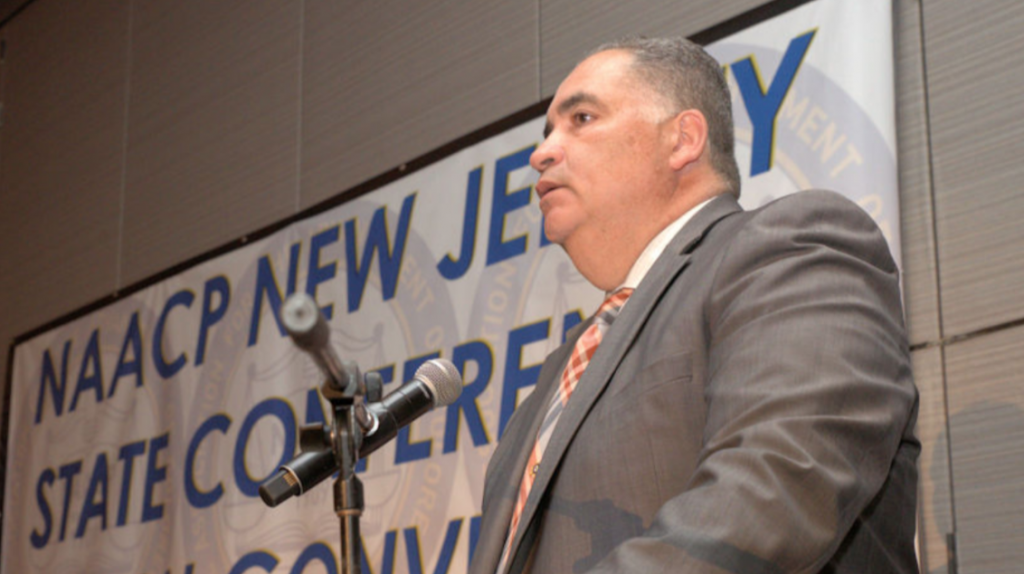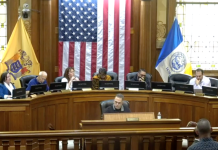In an editorial, New Jersey NAACP President Richard T. Smith explains why he believes Jersey City must immediately pass a strong inclusionary zoning ordinance to protect communities of color from displacement.

Jersey City is at a crossroads.
As tens of thousands of new luxury housing units continue to be built across the city, its working families, particularly in communities of color, are struggling to make ends meet due to rapidly escalating rents and home prices.
Especially in the wake of the devastating COVID-19 pandemic, it is unacceptable that the city’s elected officials have enabled developers to make unfathomable amounts of money building homes for wealthy new residents while refusing to take the action urgently needed to protect Jersey City’s longtime residents of color from displacement.
After years of delay and innumerable missed opportunities, the time is certainly now for Mayor Fulop and the City Council to adopt a strong inclusionary zoning ordinance that requires 20 percent of all new units constructed to be affordable to working families.
This is the norm in dozens of towns across New Jersey, and if Jersey City’s officials are committed to equity and inclusion, they should immediately take action to do the same.
The now-void ordinance that the Fulop administration passed in October 2020 was riddled with so many developer-friendly loopholes as to rightly deserve the scorn and nickname it spawned, #fauxIZO.
It allowed the City Council at any time, for any reason, to waive the affordable housing requirements for any favored developer.
When it wasn’t waived, the ordinance only required a measly five percent affordable housing, the rest could be traded away for payments as low as $25,000 or for so-called “community benefits,” such as swimming pools and parking garages for the luxury units.
The City’s elected officials seemed to totally miss the point that a new swimming pool or parking garage for the rich is of little use to the working families who cannot afford to live where those “benefits” are being provided.
Fortunately, Fair Share Housing Center sued and the ordinance was invalidated this month by the Hudson County Superior Court. The trial court rightly held that trading affordable homes away in backroom deals is unlawful.
As a result, Mayor Fulop and the City Council have a second chance to step up and do right by Jersey City’s communities of color.
Community and civil rights groups (including the New Jersey NAACP, the Latino Action Network, Solidarity and Mutual Aid Jersey City, the Morris Canal Community Development Corporation, the Hudson County Progressive Alliance, and many others) have long been calling on the city’s elected officials to do better, and they should heed the call.
The City Council should take full advantage of this opportunity and immediately pass a strong ordinance with no buyouts, giveaways, or waivers.
If the city’s elected officials do not take meaningful action now, their lasting legacy will be that the city’s affordability crisis will be further exacerbated and that much of what has made Jersey City unique – its ethnic, racial, and socio-economic diversity – will be lost.
Jersey City should be better than that. We must demand better than that.
The failure to provide safe, decent, affordable shelter to all of our families is a moral failing of the gravest kind, and one we have the tools to remedy – but only if we summon the will to do so.
Pass a strong inclusionary zoning ordinance now.











The message in this article was right to the point. For years the mayor has been doing back door deals and getting rich from it. Now is the time for the people of JC to come out and vote. Unfortunately we don’t have someone running that will win, but look out in the next four years cause I’m coming. 1Love
The Lavarro ordinance didn’t propose 20% of all units would be affordable, it was based on variances. It was also very poorly written, and would have restricted development outside of downtown. The author doesn’t really have any idea what he’s talking about, and is parroting Rolando Lavarro propaganda.
Mayor Fulop and his buddies need to get rid of those $ signs in his eyes so he can see, but he is not of cor or poor. Politicians so disappointing 😑